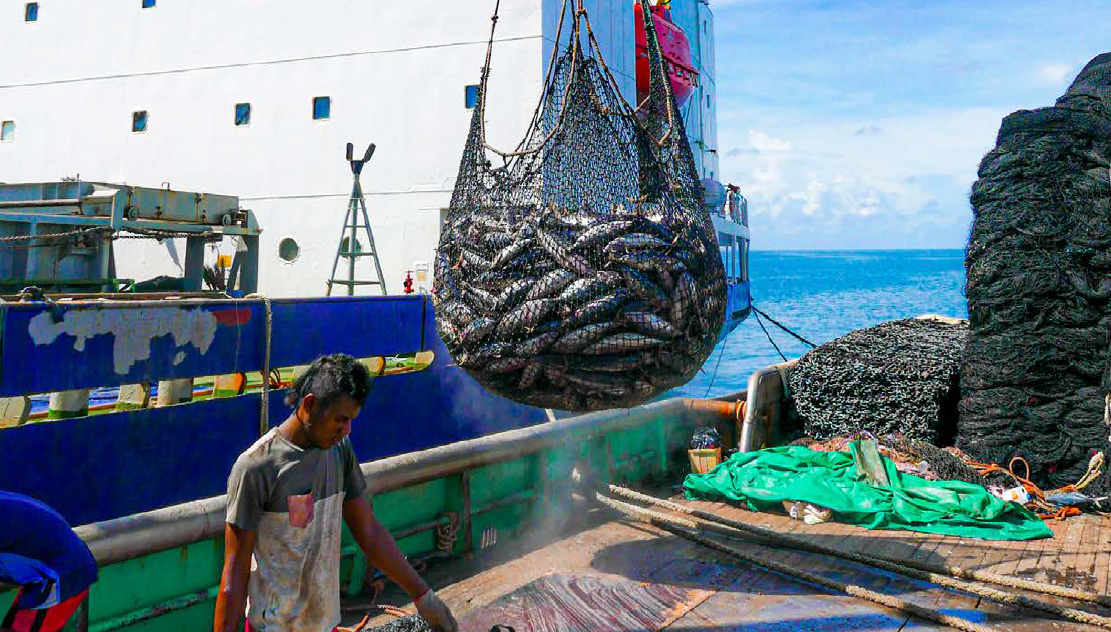A regional fishery council warned that the Biden administration’s plan to block off the U.S territorial waters in the Pacific would be the end of American Samoa’s tuna canning industry and quash the culture which the federal government claims to protect.
While commercial fishing is currently allowed within 50 to 200 miles of the Pacific Remote Islands Marine National Monument, the National Oceanic Atmospheric Agency’s sanctuary expansion proposal would completely cover the U.S exclusive economic zone, prohibiting commercial fishing by U.S fishermen in U.S waters.
“For more than 30 years, American Samoa-based purse seiners and Honolulu-based longliners operated in the waters of the Pacific Remote Islands Area until the establishment of the PRIMNM in 2006,” the Western Pacific Fishery Management Council said.
The Western Council is one of the eight established under the Magnuson-Stevens Fishery Conservation and Management Act in 1976 to manage offshore fisheries.
“This new action will force U.S purse seiners to fish farther away from Pago Pago Harbor and transport their catch to Mexico and Ecuador instead of the StarKist Samoa cannery, which serves as the backbone of American Samoa’s economy,” the council added.
The Pacific Remote Islands encompass Baker, Howland, and Jarvis Islands; Johnston, Wake, and Palmyra Atolls; and Kingman Reef. The proposed new sanctuary designation would include the marine areas within the existing monument as well as the currently unprotected submerged lands and waters to the full extent of the nation’s EEZ.
NOAA said the proposed new marine monument “would honor the ancestral, historical, and cultural connections to the Pacific Remote Islands and the surrounding open-ocean waters and recognise the importance of indigenous knowledge, language, stories, and cultural connections between lands, waters, and peoples, and celebrate distinct cultures.”
Kitty Simonds, the fishery council’s executive director, noted the irony in the agency’s intent, pointing out “the contradiction between claiming to preserve cultural influences, while simultaneously abolishing fishing, which holds significant importance within the culture.”
“It’s obvious that the ocean belongs only to the federal government and not to its people, and we are merely spectators,” she added.
Manny Duenas, the council’s vice chair from Guam, raised questions about the true consideration of conserving marine resources in the Pacific area. “Which generation is being prioritised, and is it for the people of the mainland or the Pacific?”
Rep. Amata Radewagen, American Samoa’s delegate to the U.S Congress, expressed her concern over the lack of consultation with U.S territories and the lack of the council’s involvement in the decision-making process.
Dr Judi Guthertz, a council member representing Guam, urged the federal government to restart the process with consultation and consensus building. “Shame on the federal government,” she said.
NOAA said the sanctuary designation would augment the existing protections for the Pacific Remote Islands Marine National Monument with additional regulatory and non-regulatory tools, and conserve additional areas outside the monument’s existing boundary.
Archie Soliai, director of the American Samoa Department of Marine and Wildlife Resources, said the federal action, coupled with NOAA’s rule requiring 558 purse seine days to be fished within the U.S EEZ, is “the nail in the coffin” to the tuna industry in American Samoa.
William Sword, the council’s vice chair from American Samoa, said the marine expansion plan was based on advice “from individuals who do not reside in American Samoa and will not be adversely affected by the proposed action.”
“Those cannery workers are poor and you want to take food off of their tables,” Sword said.
Earlier this year, American Samoa Governor Lemanu Peleti Mauga notified NOAA of his government’s intention to go to court to stop the marine expansion.
The council has until 23 December to respond to NOAA’s proposal. The NOAA Office of National Marine Sanctuaries is expected to complete the process, including the environmental impact statement, by August 2024.
SOURCE: PACIFIC ISLAND TIMES/PACNEWS














